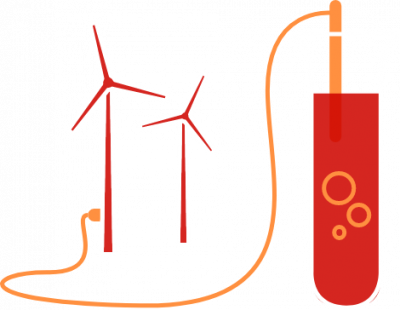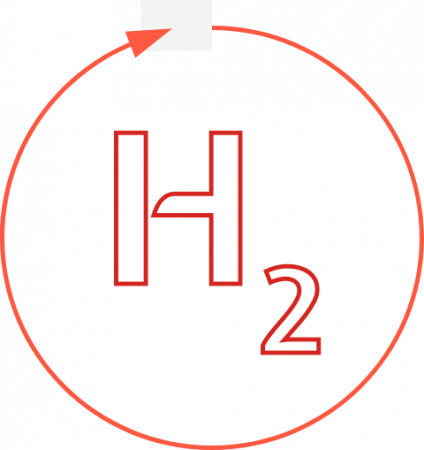SCHMOELE AND HYDROGEN HEAT EXCHANGERS – OUR CONTRIBUTION FOR A CLIMATE CHANGE BY HYDROGEN

Coal, oil and gas have been extracted since the industrial revolution in the 19th century. With the use of these fossil resources, a large amount of CO2 is added to the atmosphere. As CO2 levels increase, the temperature rises and our climate changes dramatically.
Hydrogen supports the climate change:
For many applications there are already alternatives based on green hydrogen. But what does green hydrogen mean? The gas is colorless, isn’t it?
Hydrogen is distinguished by the following colors, depending on the production method:
| Hydrogen | Description |
|---|---|
| Grey Hydrogen | is produced by steam reforming fossil fuels such as natural gas or coal and is considered a transitional technology. |
| Blue Hydrogen | CO2-neutral production method of gray hydrogen. The CO2 produced during steam reforming is captured and stored and thus does not enter the atmosphere. |
| Turquoise hydrogen | is produced by methane pyrolysis from natural gas. Production produces solid carbon instead of CO2, which can be reused in other products. CO2 neutrality is achieved through the use of energy from renewable sources. |
| Green Hydrogen | is produced by electrolysis of water with the use of electricity from 100% renewable sources. Thus, this hydrogen production is CO2-free. |
Hydrogen applications
But where can hydrogen actually be used? On Earth, hydrogen is most commonly present in bound form as water. Hydrogen has a high energy density, making it a good energy carrier.
Hydrogen is used to produce and store green electricity, in chemical and steel production, in the food industry, and in the mobility and real estate sectors – this is how green hydrogen supports the climate change.

Green hydrogen is produced from water in an electrolyzer. In the process, water is split into oxygen and hydrogen and stored. Heat is required in the electrolysis process. After the splitting process, oxygen and hydrogen must be cooled for storage. Heating and cooling in the process is achieved, for example, with shell-and-tube heat exchangers.
Because hydrogen has a low density, it is usually stored in liquid form or under high pressure. Hydrogen can be compressed to, for example 350 – 1000 bar via hydrogen compressors. This is usually done in several stages. With each compression stage, the temperature rises, which must be lowered again via a hydrogen heat exchanger.


In the mobility sector, green hydrogen represents an alternative to battery-electric drives. In addition to using the hydrogen in an internal combustion engine converted for this purpose, most applications envision a fuel cell as the engine. The fuel cell allows hydrogen and oxygen to react in its membranes to form water vapor. In this process, the fuel cell generates electricity that is used via electric motors to power cars, LWKs, buses, or locomotives.
To bring hydrogen into the right temperature window and condition for the fuel cell, an evaporator in the form of a hydrogen heat exchanger, for example, is used.

Hydrogen strategy
The increasing global demand for energy is increasing the pressure on the planned energy transition. In the long term, we can only ecologically cover our energy needs with green hydrogen.
In order to function a supply chain of green hydrogen, the infrastructure have to be built globally. From the production to the consumption of the green hydrogen, the required machines and systems, such as electrolyzers, compressors or fuel cells are currently being built up.
We at SCHMOELE GmbH support these projects, for example by developing and manufacturing of heat exchangers for the electrolyte of fuel cells. Thus, we provide a significant contribution to the energy transition and are happy to support you with your hydrogen projects.
H2: Our contribution is efficiency
In all hydrogen-related applications, the following functions are required in the process:
• Cooling
• Heating
• Evaporation
• Condensing




With the development, optimization and production of efficient heat exchangers, Schmöle reduces the energy demand in a wide range of H2 applications. We accompany our customers from design and simulation to the production of prototypes and series production.

